Human Orbital Spaceflights
![]()
International Flight No. 143STS-44Atlantis (10)44th Space Shuttle missionUSA |
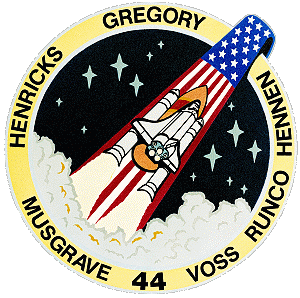 |
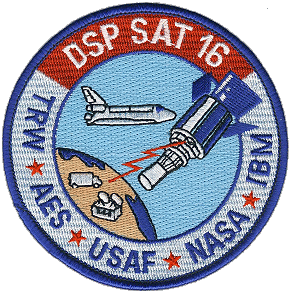 |
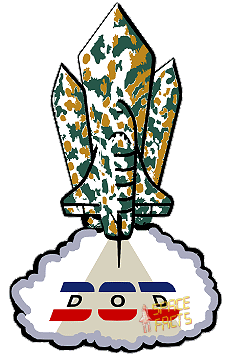 |
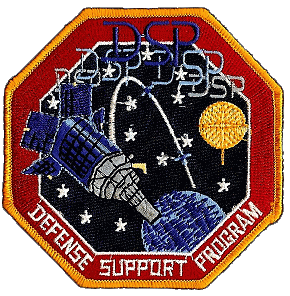 |
|
![]()
Launch, orbit and landing data
walkout photo |
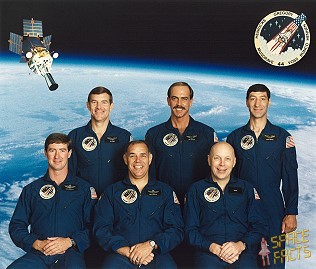 |
||||||||||||||||||||||||||||
alternative crew photo |
Crew
| No. | Surname | Given names | Position | Flight No. | Duration | Orbits | |
| 1 | Gregory | Frederick Drew | CDR | 3 | 6d 22h 50m 43s | 110 | |
| 2 | Henricks | Terence Thomas "Tom" | PLT, IV-1 | 1 | 6d 22h 50m 43s | 110 | |
| 3 | Voss | James Shelton | MS-1, EV-2 | 1 | 6d 22h 50m 43s | 110 | |
| 4 | Musgrave | Franklin Story | MS-2, FE | 4 | 6d 22h 50m 43s | 110 | |
| 5 | Runco | Mario, Jr. "Trooper" | MS-3, EV-1 | 1 | 6d 22h 50m 43s | 110 | |
| 6 | Hennen | Thomas John | PS-1 | 1 | 6d 22h 50m 43s | 110 |
Crew seating arrangement
|
 |
|
||||||||||||||||||||||||||||
Backup Crew
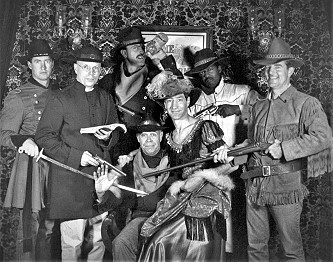 |
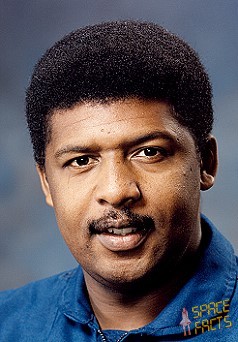 |
||||||||||
Hardware
| Orbiter : | OV-104 (10.) |
| SSME (1 / 2 / 3): | 2015 (7.) / 2030 (6.) / 2029 (5.) |
| SRB: | BI-047 / RSRM 19W |
| ET: | ET-53 (LWT-46) |
| OMS Pod: | Left Pod 01 (16.) / Right Pod 01 (16.) |
| FWD RCS Pod: | FRC 4 (10.) |
| RMS: | - |
| EMU: | EMU No. 2019 (PLSS No. 1009) / EMU No. 2018 (PLSS No. 1014) |
Flight
|
Launch from Cape Canaveral (KSC) and
landing on the Edwards
AFB, Runway 05.
A launch set for November 19, 1991 was delayed due to replacing and testing a malfunctioning redundant inertial measurement unit on the Inertial Upper Stage booster attached to the Defense Support Program satellite. The launch was reset for November 24, 1991 and was delayed 13 minutes to allow an orbiting spacecraft to pass and to allow external tank liquid oxygen replenishment after minor repairs to a valve in the liquid oxygen replenishment system in the mobile launcher platform. The mission was dedicated to the Department of Defense. The unclassified payload included a Defense Support Program (DSP) satellite designed to detect nuclear detonations, missile launches and space launches from a geosynchronous orbit with an attached Inertial Upper Stage (IUS). After deploying DSP on the first day of the flight, the crew was scheduled to work with a variety of secondary payloads aboard Atlantis. The Terra Scout experiment should include onboard analysis and an evaluation of using the Shuttle to observe various sites on Earth by Thomas Hennen, a trained analyst who had intensively studied the sites to be observed. The Military Man in Space experiment should evaluate the ability of a spaceborne observer to gather information about ground troops, equipment and facilities. The DSP satellite was approximately 33 feet (10 meters) long, 14 feet (4.27 meters) in diameter and weighed 5,200 pounds (2,358 kg). To provide a scanning motion for the infrared (IR) sensor, the satellite was spun about its Earth-pointing axis. Satellite-spin momentum was reduced to a nominal value of zero by introducing an equal and opposite momentum achieved throughout operation of a Reaction Wheel. The resulting "zero momentum" satellite was attitude controlled by gas thrusters. The sensor's purpose was to detect, locate, and identify targets of interest that are intense sources of IR radiation. The sensor and the spacecraft, which together comprise the satellite, were placed in geosynchronous-equatorial orbit so that the telescope was pointed toward the Earth and rotated at six revolutions per minute. The axis of the satellite's rotation was normal to the Earth's surface. A prime requirement of the spacecraft was to provide attitude control to maintain the pointing direction accurately. Detection of IR sources was accomplished with the telescope and Photo-Electric Cell (PEC) array portions of the IR telescope subsystem. The PEC detector array, mounted in the telescope center line to coincide with the image surface of the telescope optics, scanned the Earth's surface through rotation of the satellite. As a detector passed across an IR source it developed an electronic signal. The many signals were relayed to processing units where they were grouped and sent to the ground for mission usage. IUS 14, the vehicle used on mission STS-44, was a two-stage rocket weighing approximately 32,500 pounds (14,741 kg). Each stage had a solid rocket motor, preferred over liquid-fueled engines for their relative simplicity, high reliability, low cost and safety. The IUS was 17 feet (5.18 meters) long and 9.25 feet (2.82 meters) in diameter. It consisted of an aft skirt; an aft stage solid rocket motor containing 21,400 pounds (9,706 kg) of propellant generating approximately 42,000 pounds (19,050 kg) of thrust; an interstage; a forward stage solid rocket motor with 6,000 pounds (2,721 kg) of propellant generating approximately 18,000 pounds (8,164 kg) of thrust; and an equipment support section. After the orbiter payload bay doors were opened in orbit, the orbiter maintained a preselected attitude to keep the payload within thermal requirement constraints. On-orbit predeployment checkout began, followed by an IUS command link check and spacecraft communications command check. Orbiter trim maneuver(s) were normally performed at this time. Forward payload restraints were released and the aft frame of the airborne support equipment tilt the IUS/DSP to 29 degrees. This extended the DSP into space just outside the orbiter payload bay, allowing direct communication with Earth during systems checkout. The orbiter was then maneuvered to the deployment attitude. Prior to deployment, the spacecraft electrical power source was switched from orbiter power to IUS internal power by the orbiter flight crew. After verifying that the spacecraft is on IUS internal power and that all IUS/DSP predeployment operations have been successfully completed, a GO/NO-GO decision for IUS/DSP deployment was sent to the crew. When the orbiter flight crew was given a GO decision, they activated under the lead of James Voss the pyrotechnics that separate the IUS/DSP umbilical cables. The crew then commanded the electromechanical tilt actuator to raise the tilt table to a 58-degree deployment position. The orbiter's RCS thrusters were inhibited and a pyrotechnic separation device was initiated to physically separate the IUS/spacecraft combination from the tilt table. Compressed springs provided the force to jettison the IUS/DSP from the orbiter payload bay at approximately 4.2 inches (10.7 centimeters) per second. The tilt table then was lowered to minus 6 degrees after IUS and its spacecraft were deployed. A small orbiter maneuver was made to back away from the IUS/DSP. Approximately 15 minutes after IUS/DSP deployment, the orbiter's engines were ignited to move the orbiter away from the IUS/spacecraft. At approximately 45 minutes after ejection from the orbiter, the pyrotechnic inhibits for the first solid rocket motor were removed. The belly of the orbiter was oriented towards the IUS/DSP combination to protect the orbiter windows from the IUS's plume. The IUS recomputed the first ignition time and maneuvered necessary to attain the proper attitude for the first thrusting period. TERRA SCOUT was an Earth observation experiment, which utilized the skills of a trained analyst to perform the observations. The analyst was a payload specialist who had intensively studied the sites of interest. The payload specialist was experienced in imagery analysis, terrain and aerial observation, and has some formal geology training. The payload specialist used the Spaceborne Direct-View Optical System (SpaDVOS) to assist him in the site analysis. Each site had a prepared site packet which included selected maps and photographs. A number of selected sites have large resolution panels laid out in a grid pattern. The use of these grids facilitated quantifying the resolution limit from the Shuttle cabin. The primary objective of the TERRA SCOUT experiment was to explore the man/machine interface between skilled technicians and current and advanced sensors. M88-1 was an ongoing series of tri-service experiments designed to asses man's visual and communication capabilities from space. Areas of investigation included dynamic Shuttle tasking, near real-time information relay, and quantification of the astronaut's visual resolution limits. The STS-44 mission incorporated small aperture, long focal-length optics, and a charge-coupled device (CCD) camera to produce a high-resolution digital image that can be stored, manipulated, and evaluated on-orbit. Pertinent findings were then communicated via UHF voice to tactical field users seconds after the observation pass was complete. The TERRA SCOUT experiment included onboard analysis and an evaluation of using the Shuttle to observe various sites on Earth by Thomas Hennen, a trained analyst who had intensively studied the sites to be observed. The Strategic Defense Initiative's Ultraviolet Plume Instrument (UVPI) was a sensor package which collected images of the UV emission from rocket plumes in space and measures the UV backgrounds seen from a space platform. A gimbaled mirror allowed the UVPI to look at objects within a 50-degree half-angle cone about nadir. Another mirror mounted on the instrument's door allowed observation of stars and the Earth's horizon when the door was partially open. The UVPI had two cameras. The tracker camera had a 1.9-degree by 2.5-degree field of view and was used to acquire and track a target so that the electronic tracker could lock on and bring the target into the smaller field-of-view (0.11 x 0.15 degree) of the plume camera. The tracker camera had a 245 to 450 nanometer passband. The plume camera had four filters which could be selected. The Extended Duration Orbiter Medical Project validated countermeasures for longer duration flights. Nine of the 13 Detailed Supplementary Objectives flying on STS-44 support the project. The crew's activities included electrocardiograph monitoring; measurement of inner eye pressure; assessing orthostatic function, the ability to stand upright upon return to Earth; treadmill exercise; checking gaze stability; and examining endocrine system regulation. Many of the on-orbit findings were compared with tests done before and after the flight. A large segment of the crew's time was devoted to the Lower Body Negative Pressure investigation (LBNP). This was the validation of a countermeasure combining rehydration and orthostatic stress for use on longer space flights. Operationally it was a single application, 4-hour treatment scheduled for the day before landing. The validation process, however, uses a more extensive schedule of LBNP testing. The LBNP unit was a sleeping bag-like device that sealed at the waist. Once the crew member was situated in the device, the pressure was gradually decreased, drawing fluids to the lower body much like gravity does when one stands upright on Earth. Crew members also ingested salt tablets and water during the LBNP treatment. The result of the procedure was expected to be an increased tolerance of standing upright upon return to Earth's gravity. During STS-44, crew members employed "ramp" and "soak" procedures. The ramp, which lasted 36 minutes, gradually lowered the pressure in the unit by 10 millimeters of mercury, or mmHg, increments to - 50 mmHg before recovery. The soak procedure, performed once late in the mission, holds the negative pressure in the unit to -30 mmHg for three hours and 45 minutes. A ramp procedure was performed 24 hours later to determine if the soak improved the subject's orthostatic tolerance. Heart rate and blood pressure measurements were taken during both procedures. The Radiation Monitoring Equipment-III measured ionizing radiation exposure to the crew within the orbiter cabin. RME-III measured gamma ray, electron, neutron and proton radiation and calculates in real time exposure in RADS-tissue equivalent. The information was stored in memory modules for post-flight analysis. The hand-held instrument was stored in a middeck locker during flight except for activation and memory module replacement, done every two days. RME-III was activated by the crew as soon as possible after reaching orbit and operated throughout the mission. A crew member entered the correct mission elapsed time upon activation. The Shuttle Activation Monitor (SAM) was designed to measure gamma ray data within the orbiter as a function of time and location. Located in the middeck, the crew installed a foil packet at four locations onboard. A tape recorder and two detector assemblies then recorded the information. Each activation of the experiment lasted about 12 hours and recorded information from a different location of the cabin. The Cosmic Radiation Effects and Activation Monitor (CREAM) experiment was designed to collect data on cosmic ray energy loss spectra, neutron fluxes and induced radioactivity. The data were collected by active and passive monitors placed at specific locations throughout the orbiter's cabin. CREAM data were obtained from the same locations that were used to gather data for the Shuttle Activation Monitor (SAM) experiment in an attempt to correlate data between the two. The active monitor was used to obtain real-time spectral data, while the passive monitors obtained data during the entire mission to be analyzed after the flight. The flight hardware had the active cosmic ray monitor, a passive sodium iodide detector, and up to five passive detector packages. All hardware fitted in one locker on Discovery's middeck. The Air Force Maui Optical Site (AMOS) tests allowed ground- based electro-optical sensors located on Mt. Haleakala, Maui, Hawaii, to collect imagery and signature data of the orbiter during cooperative overflights. The scientific observations made of the orbiter, while performing reaction control system thruster firings, water dumps or payload bay light activation, and were used to support the calibration of the AMOS sensors and the validation of spacecraft contamination models. The AMOS tests had no payload unique flight hardware and only required that the orbiter be in predefined attitude operations and lighting conditions. The objective of the VFT-1 experiment was to measure changes in a number of vision parameters in the vision of subjects exposed to microgravity. The VFT-1 consisted of hand-held battery-powered testing device which incorporated a binocular eyepiece and used controlled illumination to present a variety of visual targets for subject testing. The device measured a number of basic vision performance parameters. Test results data were read on a display and recorded on data sheets. Bioreactor Flow and Particle Trajectory in Microgravity was a fluid-dynamics experiment aboard STS-44 to validate Earth-based predictions for the action of cell cultures in the NASA-developed Slow-Turning Lateral Vessel (STLV) bioreactor. Ground research efforts in cell culturing are limited because of the inability to suspend cultures in the presence of gravity. Cultures grown by standard methods often are damaged by the suspension processes or, in effect, smother their own development when nutrients are blocked from some cells by others developing around them. Researchers are interested in the benefits of flying a bioreactor in space because of the expected increased capabilities for cell culturing. The STLV bioreactor, developed as a tool for Space Station Freedom, growed cell cultures in a horizontal cylindrical container that slowly rotated, emulating microgravity and keeping the cells continuously suspended while bathing them in nutrients and oxygen. On STS-44, components from the NASA bioreactor occupied two middeck lockers. Inside the system, beads of varying sizes simulating cell cultures of varying sizes were rotated in a solution of water and nutrients. The action of the beads were used to validate the predicted action of cell cultures in microgravity. The results of DSO 316 were used to refine the system for future flight experiments. Cargo bay payloads included the Interim Operational Contamination Monitor (IOCM). A COLA maneuver to fly in save distance to Kosmos 851 launch rocket was needed. The landing was originally scheduled for the Kennedy Space Center on December 04, 1991 but the ten-days mission was shortened and the landing rescheduled and diverted to the Edwards AFB following the November 30, 1991 on-orbit failure of one of three orbiter inertial measurement units (IMU 2 = Inertial Measurement Unit). STS-44 was the second Minimal Duration Mission in the history of Space Shuttle missions. The first aborted mission was STS-2. |
Photos / Graphics
 |
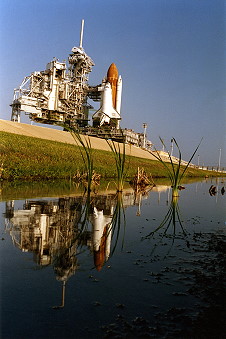 |
 |
 |
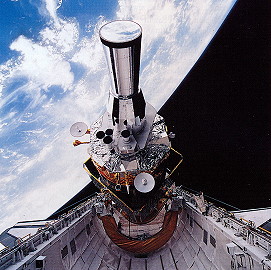 |
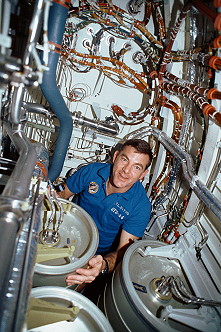 |
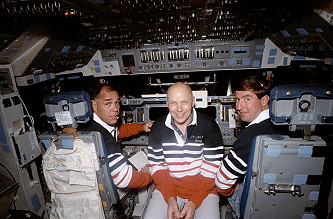 |
 |
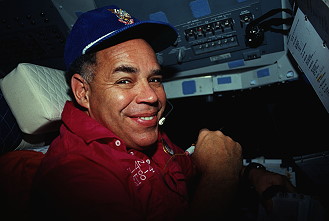 |
 |
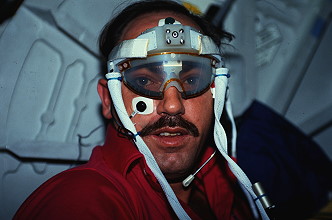 |
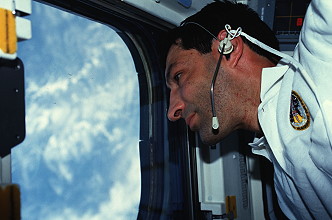 |
 |
 |
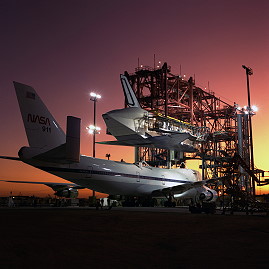 |
| © |  |
Last update on June 19, 2023.  |
 |